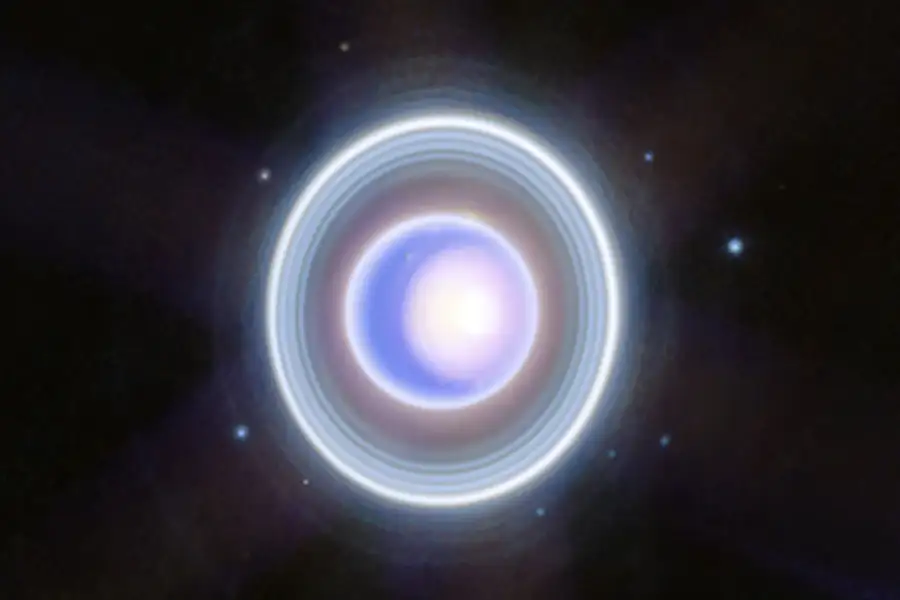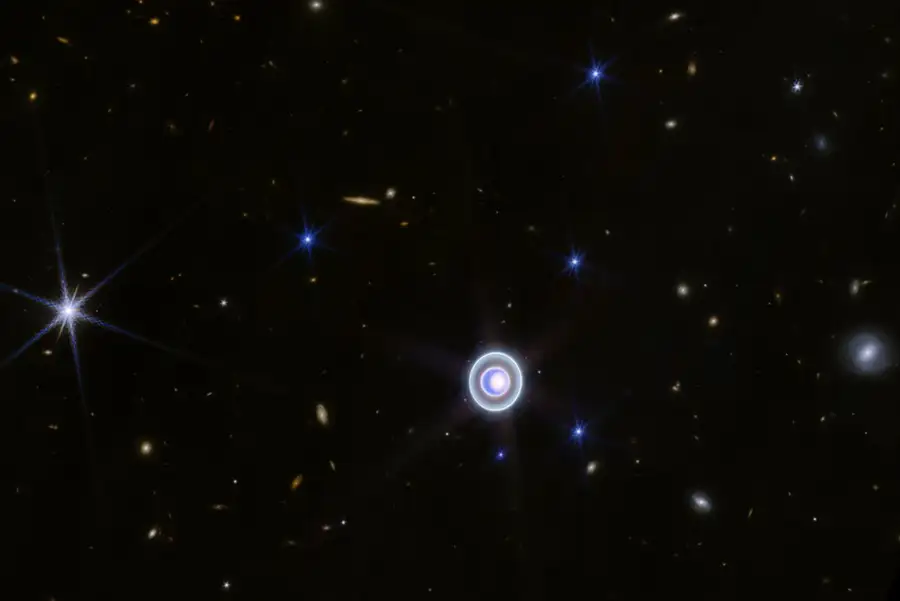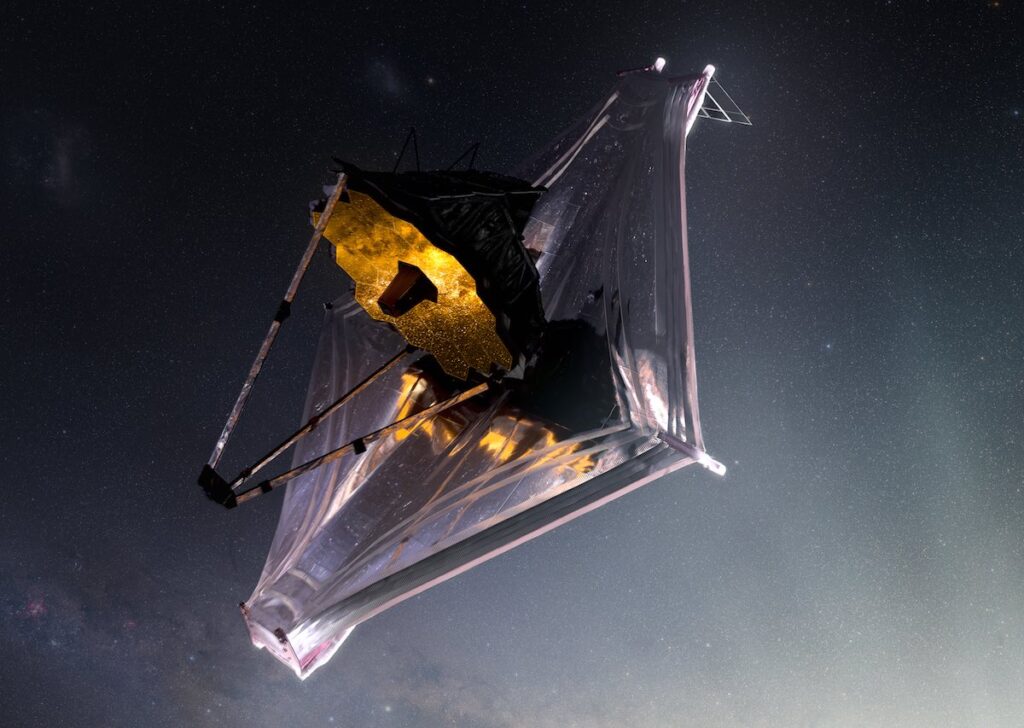NASA’s spectacular new images of Uranus will leave you speechless
- NASA’s James Webb Space Telescope (JWST) has provided a detailed view of Uranus
- It’s allowing us to see the planet in more detail than ever before
- The images captured the rings, moons, storms and a bright polar cap
Published on Dec 30, 2023 at 7:11 PM (UTC+4)
by Amelia Jean Hershman-Jones
Last updated on Jan 02, 2024 at 1:13 PM (UTC+4)
Edited by
Amelia Jean Hershman-Jones
NASA’s James Webb Space Telescope (JWST) has provided a detailed view of Uranus – and it’s unlike anything you’ve seen before.
You can see the images being zoomed on in the eerily stunning video below:
The images from NASA’s JWST capture the beautiful, yet mysterious planet’s distinctive features.
These include its rings, moons, storms, and even a seasonal polar cap in the most complete view of the planet ever.
READ MORE! Astronaut Tim Peake opens up about the secrets ‘every astronaut’ keeps
And recording this level of detail is important in an ever-changing landscape, as Saturn’s rings are predicted to disappear in 2025.
NASA’s JWST boasts infrared capabilities, allowing it to capture the planet’s dynamic atmosphere with surprising detail.
Astronomers used a combination of long and short exposure times with NASA’s JWST to create the images so that its fast-moving features can be smoothed over.
Although an orbit around the sun takes Uranus 84 years, the planet takes only 17 hours to complete a rotation – more quickly than a standard telescope exposure.
In April, NASA’s JWST used its infrared sensors to image Uranus but the final two rings were too faint to show up.

This follow up used a wider-field of view and more wavelengths of infrared light, revealing the rings in even more detail and showing us the elusive final two rings.
The sensitivity of NASA’s JWST allowed them to zoom in so far that we can see the close-in Zeta ring,
Faint, diffuse, and elusive – it’s rarely caught on camera.
From its seasonal north polar cloud cap and bright storms near and below the southern border of the cap, NASA’s technology didn’t miss a thing.
The storms are seen as white wisps against the blue backdrop.

One image shows nine of Uranus’s 27 moons.
Another shows five more moons (Oberon, Umbriel, Ariel, Miranda and Titania) glowing like blue stars – bringing the total we can see to 14.
Due to the planet’s extreme tilt, Uranus serves as a valuable tool for understanding far-off exoplanets – like this ‘candyfloss’ one – that are currently being discovered.
This provides NASA’s scientists insights into planetary formation and meteorology.
The result is that it’s a crucial subject for future exploration and broader astronomical studies.
The ice giant, Uranus, is a dynamic world with rings, moons, storms and extreme seasons.
If NASA’s missions were to visit Uranus in the future, an understanding of how to navigate debris within the planet’s rings will be vital.
As well as making Uranus a rich source for study, its extreme 98° tilt also means its seasons are extreme.
For 25% of its year, the Sun shines on one pole.

Meanwhile, the other half the planet experiences a dark, 21-Earth year winter.
Yikes.
Space exploration is undergoing something of a renaissance as we enter 2024 with the US set to return to the moon for the first time in 50 years.
What’s more, gas recently found on one planet is thought to be a huge breakthrough in terms of our search for alien life.
DISCOVER SBX CARS: The global premium car auction platform powered by Supercar Blondie

All Supercar Blondie contributors undergo editorial review and fact-checking to ensure accuracy and authority in automotive journalism. After gaining her BA Hons in French and English at the University of Nottingham, Amelia embarked on a vocational diploma from the National Council for the Training of Journalists (NCTJ). This led to numerous opportunities, from interning at Vogue to being on the small team that launched Women’s Health magazine in the UK, which was named the PPA Consumer magazine of the year for three years running. As Health, Beauty and Fitness editor, Amelia personally received a Johnson & Johnson Award and was shortlisted for both PPA and BSME titles. Since then, Amelia has created content for numerous titles and brands, including the Telegraph, 111 Skin, Waitrose, Red magazine, Stylist, and Elle, as well as being Head of Content at Vitality and Editor in Chief at INLondon magazine. “My superpower is translating technical jargon about the mechanical workings of a supercar into a relatable story you’ll want to share with your friends after you’ve read it.” After joining the SB Media family as a senior journalist in September of 2023, Amelia’s role has evolved to see her heading up the SEO output of the editorial team. From researching the most ‘Google-able’ key terms to producing evergreen content - it’s been a time of hard work, growth, and success for the editorial team and the Supercar Blondie website. “I like to think of myself as a ‘method journalist’. In other words: I live and breathe whatever I am writing about. When writing about fitness, I trained as a personal trainer, and as a beauty editor, I completed an ‘expert’ in scent diploma with the Fragrance Foundation. “During my tenure at Supercar Blondie, however, I did something I never thought possible: I passed my driving test at the age of 36. One day I’d love to train as a mechanic to better understand what happens under the hood, too. “My sweet spot is providing readers with a ‘takeaway’ (read: something new they didn’t know before) after reading every one of my stories. While I don’t claim to be an expert in the automotive world, I know the experts and bodies in the field to rely on to provide our readers with an informative and thought-provoking story every time they visit the site.”





